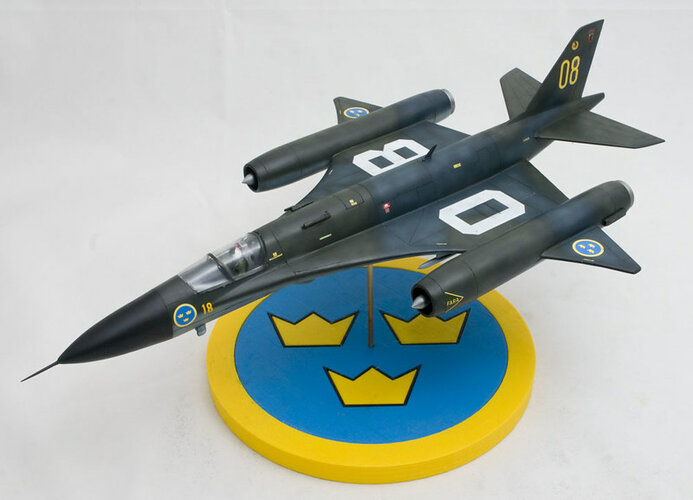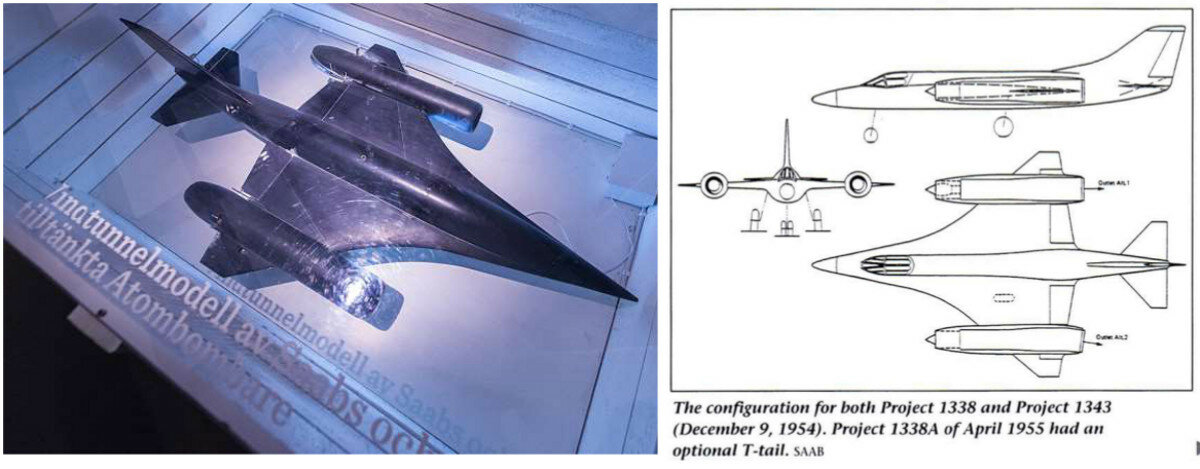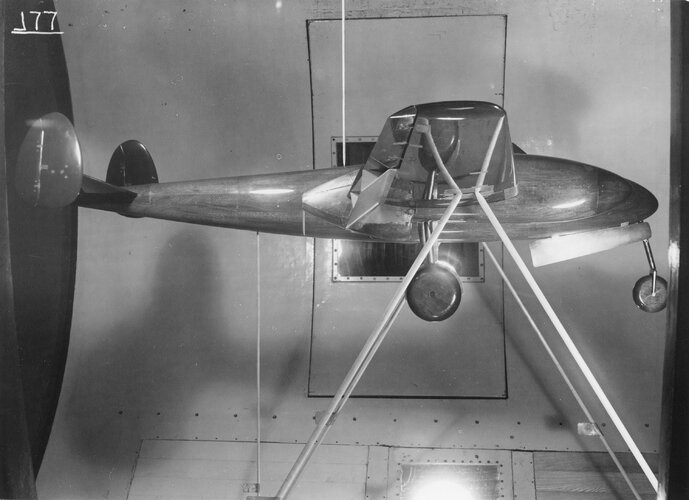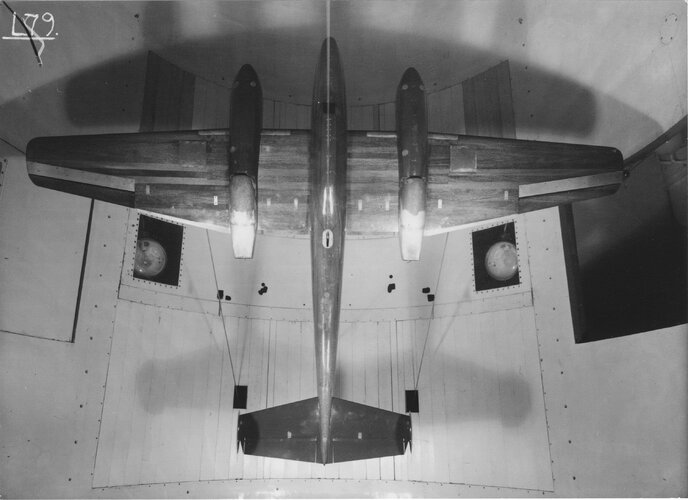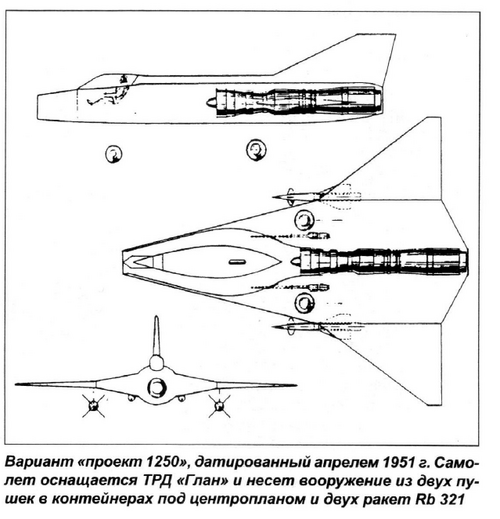Hi! 1300-71D. (1371D).
Wing plan form and horizontal tail stabilizer shape between wind tunnel test model and three side view drawing are different.
Three side view drawing source : AIR Enthusiast No.90, SECRET SAAB PROJECTS, Tony Buttler.
https://intscalemodeller.com/viewtopic.php?t=25589
https://tecnodefesa.com.br/saab-36-o-bombardeiro-supersonico-da-suecia/
"1300 Project
The end of World War II showed that humanity would enter, for decades to come, a polarized and tense world.
For the countries of Europe, the epicenter of this division of the world, there were moments of anguish and apprehension about the spectre of communism that was advancing mainly throughout Eastern Europe.
The scenario was even worse for non-aligned nations and, like Sweden. With relatively small territory, a lean economy that could not invest large amounts in defence and was immediately in front of the former Soviet Union, it was necessary to have deterrent elements to prevent its territory from being invaded in the event of a conflict.
Although qualitatively inferior, the military might of the countries of the former Warsaw Pact was much higher in numerical terms.
The scenario was even worse for non-aligned nations and, like Sweden. With relatively small territory, a lean economy that could not invest large amounts in defence and was immediately in front of the former Soviet Union, it was necessary to have deterrent elements to prevent its territory from being invaded in the event of a conflict.
One of the moves to ensure their safety was studies for the creation of nuclear weapons.
Although the country later did not effectively develop these weapons, it was necessary to have a vector that would transport and launch the bomb at the target.
It was then that the Project 1300, a supersonic bomber designed to reach altitudes of 60,000 feet (or 18,200m), maximum speed of Mach 2.14 (2,642km/h) and take a crew member, emerged. At 17m long and 9.6m in wingspan, the empty weight was nine tonnes and could carry an 800kg pump internally. Its engines were two Bristol Olympus engines, the same as the English Avro Vulcan bombers.
Apparently two other studies were done for the project which also became known as Saab A36. For both cases it would be single-engine, one version with the air intake under the fuselage (A36-76C) and the other with on this (A-36-77A)."




